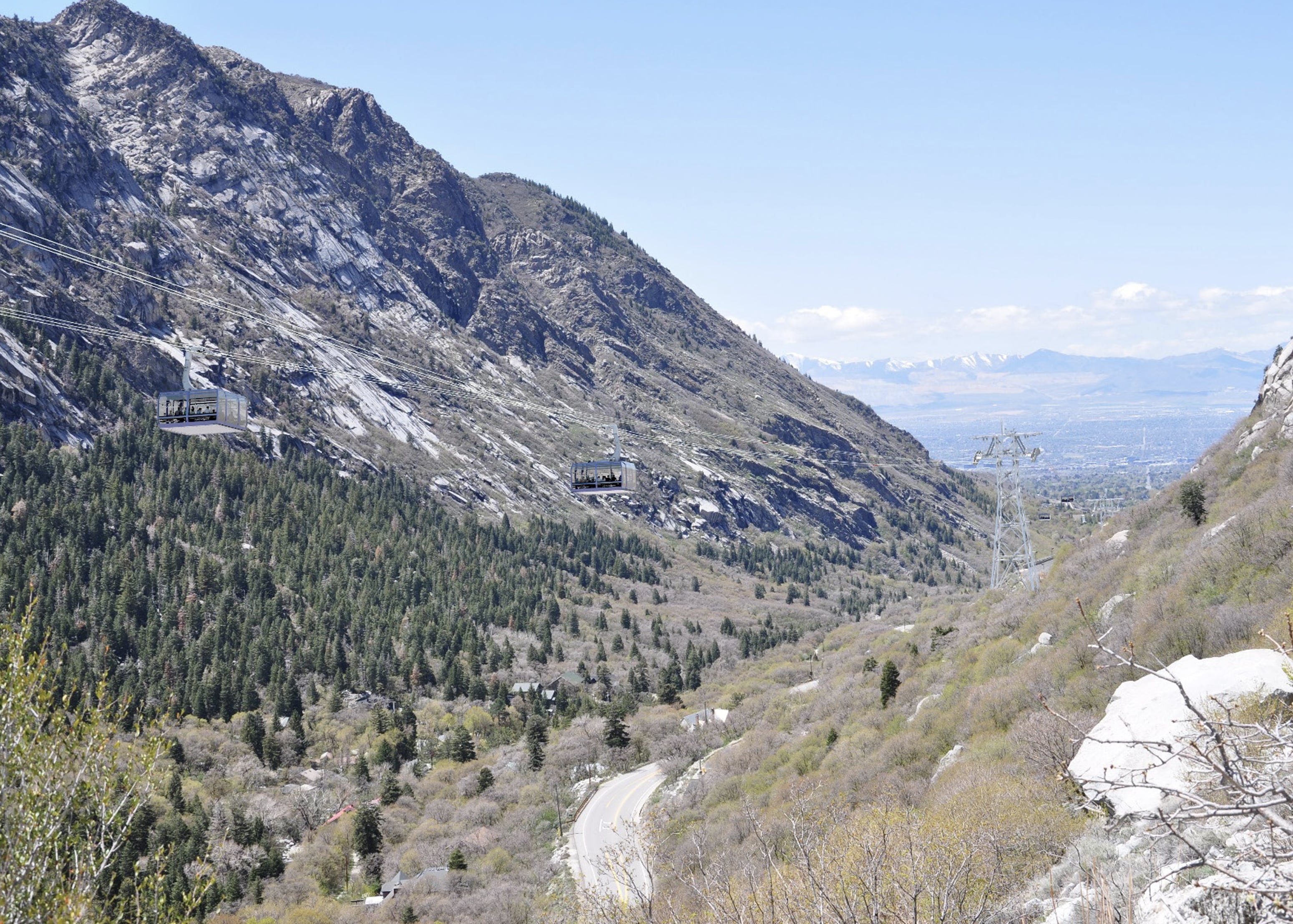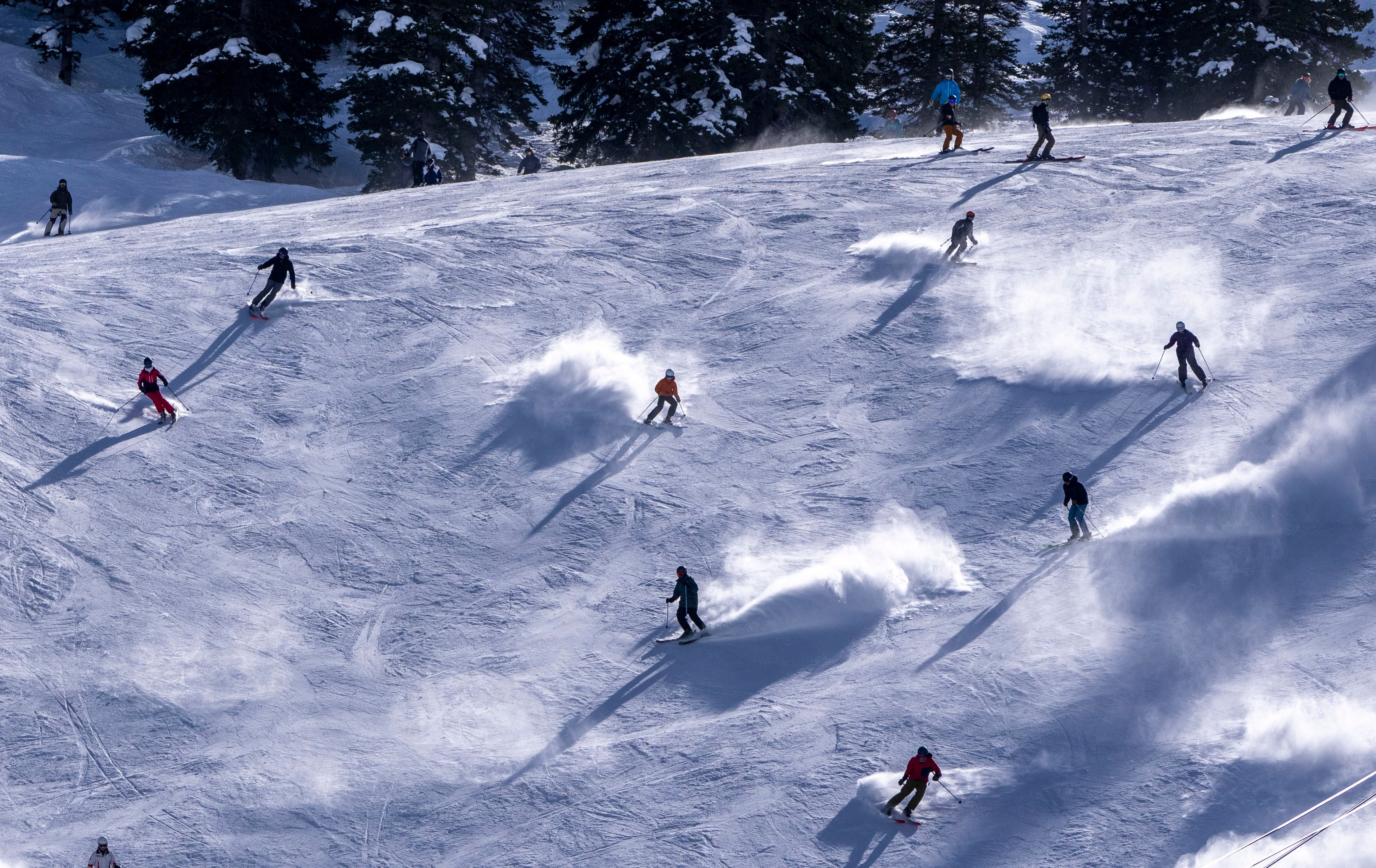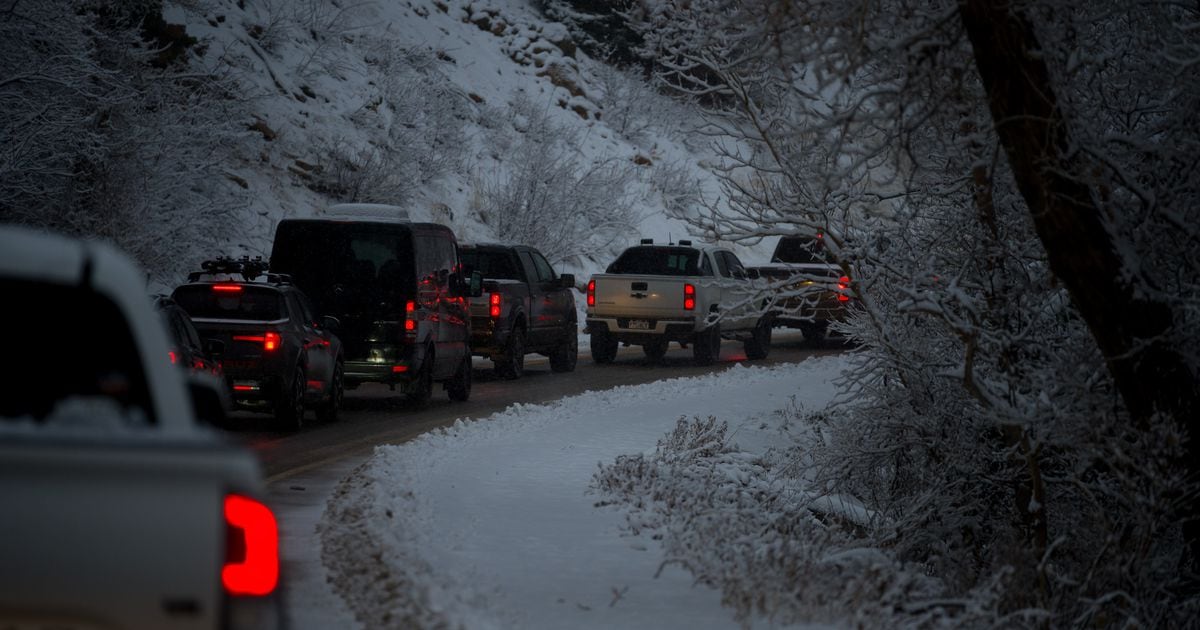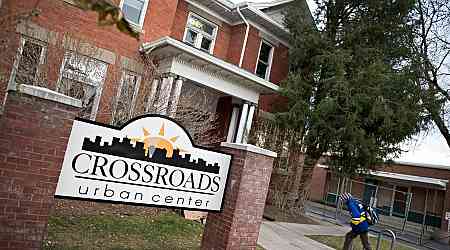Rather than a gondola, could the answer to the string of red taillights that wends down Little Cottonwood Canyon Road any winter weekend or powder day be red stop lights?
Mike Maughan, the general manager of Alta Ski Area, believes it’s an idea at least worth exploring.
Maughan recently penned a response to the Utah Department of Transportation’s phased plan to introduce tolling and build a gondola to alleviate traffic congestion in Little Cottonwood Canyon. Titled the “Red Snake Letter,” it highlights frustrations for vehicles heading down the canyon that he said UDOT’s plan doesn’t address. It also offers up some potential solutions.
Alta’s town council signed the letter, as did the managers of its five lodges and several other business owners.
“We really need to address these issues before any of that other phased implementation plan is put into place,” he said, “because that’s all set up to fail if you’re not able to address this first.”
UDOT set out to solve the canyon’s traffic problems in 2018. Last July, it officially selected a phased plan that could ultimately lead to the construction of an 8-mile gondola through the canyon. The gondola, which is included in the final phase and will follow increased busing and tolling measures, is not expected to be built before 2043 at an estimated cost of $728 million.
The main issue Maughan has with UDOT’s plan, he said, is that it was designed to address future traffic problems. It has no answers, he said, for the traffic already clogging the canyon.
“Whether it’s a gondola or it’s toll lanes or it’s buses,” Maughan said, “none of those solutions as proposed are designed to replace the current vehicle volume level in the canyon.”

The red snake has poisoned some of Alta’s skiers and employees on the resort. Maughan said it is particularly hard on those who travel to the top of State Route 210, where his ski area sits, because they often are trapped there until the rest of the canyon clears out at the end of the day. That can be hours if the weather is particularly bad or if vehicles crash or get stuck along the route.
Alta commissioned a study that showed the main factors behind the slowdown. It found that when the main route from the resort is closed and traffic leaving the canyon is redirected onto the bypass road, as many as 500 vehicles from Snowbird will merge between every two cars coming from Alta. Even on a clear day, when what Maughan called the “mainline” is open, between nine and 25 cars coming from Snowbird merge between every two cars from Alta.
The letter notes that a barrier installed at Snowbird Entry 1, which gives vehicles leaving that resort a runway of 1,200 feet down the canyon before they must integrate with SR-210 traffic, “has been nicknamed the ‘Snowbird Priority Merge Lane.’”
“It allows traffic exiting Snowbird from Entry 1 to pass up [to] 50 vehicles on S.R. 210 before merging into traffic,” the letter states. “This is very frustrating to people in vehicles traveling on S.R. 210.”
A simple way to solve that problem exists, Maughan wrote, and it’s a system UDOT already employs on other clogged highways: metering lights.
Those are the traffic lights often found on interstate on-ramps in busy areas. They increase the flow of traffic by allowing just one or two cars to merge into the main thoroughfare at a time.

The letter called for a one-to-one merge ratio. Taking into account the number of exits from each resort, the letter noted that the ratio would still allow three cars from Snowbird to fill in between every two cars coming from Alta.
That problem is literally downhill, however, from what Maughan considers the source of most of the evening traffic standstills in the canyon: the closure of the “mainline” between the two resorts.
“The traffic congestion created by the ‘mainline’ being closed is the greatest traffic congestion we have in the canyon,” he said. “It impacts people more often than the canyon being closed as a whole or everything else that happens here because that means every vehicle has to go through the bypass road.”
Avalanche danger from the numerous slide paths crossing the most direct stretch between Snowbird and Alta tends to close the road more often than icy conditions or crashes. For that, building a snowshed over both lanes, Maughan said, or at least the downhill lane, makes the most sense.
Of course, having a direct route down doesn’t pay many dividends if a car crash or slideout blocks any part of the road. To solve that issue, the letter takes a page from X (formerly Twitter) posts of numerous Alta and Snowbird skiers who have suggested implementing preemptive traction laws. Maughan’s letter suggests UDOT expand its sticker program and give the decals more authority.
Every winter since January 2020, UDOT has allowed certain tire and automotive shops to fit vehicles with a sticker verifying they have tires and tread that comply with UDOT’s traction law. The letter proposes that UDOT expand that program to include 2-wheel-drive vehicles in possession of appropriate traction devices like chains or cables. Then, the letter proposes, UDOT could enact the traction law in anticipation of a big storm. Any vehicles not bearing the stickers could then be cited by Unified Police Department officers or paid off-duty patrols who would monitor resort and roadside parking.
That’s an idea Snowbird General Manager Dave Fields can get behind.
Fields said he doesn’t agree with all the points or solutions in the Red Snake Letter. However, he does favor reducing the number of cars in the canyon that are ill-equipped to handle snowy, icy roads. He said that would go a long way toward improving traffic flow.

“I like to say that the highway only works as well as the worst car or driver in it,” Fields said. “Being a two-lane road, you get somebody who has the wrong equipment in this canyon when it starts snowing and, whether it’s no snow tires or no skill, it clogs up the whole canyon.”
UDOT previously said that it can’t preemptively turn on the traction law because the law applies to other roads within the state. In addition, UPD said doing traction checks at the mouth of the canyon or along Little Cottonwood Canyon Road takes too much staffing and further clogs traffic.
Maughan said he had a meeting with UDOT representatives about a year ago to discuss the remedies he proposed. They told him they would look into them, he said, but nothing has been done. That, he said, prompted him to write and publish the “Red Snake Letter.”
In a statement provided to The Tribune, UDOT said it continues “to have ongoing conversations with our partners on ways to improve traffic flow, address roadside parking, and increase traction device enforcement by law enforcement agencies.”
The agency also advised giving its plan a chance.

“With the five-year-long Little Cottonwood Canyon Environmental Impact Statement, UDOT conducted a thorough analysis of how to improve mobility, reliability, and safety of travel on SR-210,” the statement said, “and the Record of Decision laid out a phased approach to implementing improvements in the canyon.”
The congestion has strained the relationship between Alta and Snowbird.
Fields has been a proponent of the gondola plan from the start. In 2021, it bought a 5-acre parcel near the mouth of Little Cottonwood Canyon that could be used as a gondola base station. Conversely, the Town of Alta’s town council voted in March to formally oppose the gondola’s construction.
Maughan said he doesn’t think Snowbird is to blame for all the traffic troubles. However, if the resort eliminated roadside parking — and, thus, cars making U-turns in the middle of SR-210 — he believes that could go a long way toward improving traffic flow.
Snowbird began eliminating parking on the narrow north side of the highway this season, Fields said, and will not allow it at all moving forward. However, he said from his own observations, he has concluded that weather conditions and bad drivers are the biggest contributors to the red snake, not where people park. He would argue, he said, that incentives that bring people up the canyon later in the day are a bigger part of the problem. In particular, he pointed to Alta’s parking reservation system, which he said encourages people to arrive after 1 p.m. on weekends and holidays. Fields also nodded to Alta’s “Sunnyside at 3 Program,” which gives heavily discounted daily access to the ski area’s beginner terrain from 3-4:30 p.m. daily.
Fields said he has witnessed “huge traffic spikes once the reservations are lifted at 1 o’clock. And so that, combined with some special ticket offers that Alta does after 3 p.m. — we’ve never had as many cars in the canyon at the end of the day as we do now.”
Maughan said the reservation system — which has now been adopted by all of the ski and snowboard areas in the Cottonwood Canyons except Snowbird — has made a noticeable impact in the morning traffic. The afternoon spikes, he countered, are instead simply due to more skiers. Data from Ski Utah, the marketing arm of the state’s 15 resorts, backs that up. It recently released a report claiming Utah resorts saw 22% more visits in 2022-23, which had also been a record season.

That growth only reinforces Maughan’s belief that the relief measures UDOT plans to phase in will only make the slopes more crowded. He said he ultimately expects tolling, increased busing and even the gondola to have little impact on congestion.
“I think there’s so many cars and so many people and so much demand and people have money,” Maughan said, “tolling may put a few more people in cars, but you’re still going to have all those cars come. It’s not going to reduce the number of vehicles in the canyon during those peak periods of time when we have traffic congestion in the canyon.”
By sticking with its current plan, he posited, UDOT is green lighting a future full of red snakes in Little Cottonwood Canyon.
function onSignUp() { const token = grecaptcha.getResponse(); if (!token) { alert("Please verify the reCAPTCHA!"); } else { axios .post( "https://8c0ug47jei.execute-api.us-east-1.amazonaws.com/dev/newsletter/checkCaptcha", { token, env: "PROD", } ) .then(({ data: { message } }) => { console.log(message); if (message === "Human





























